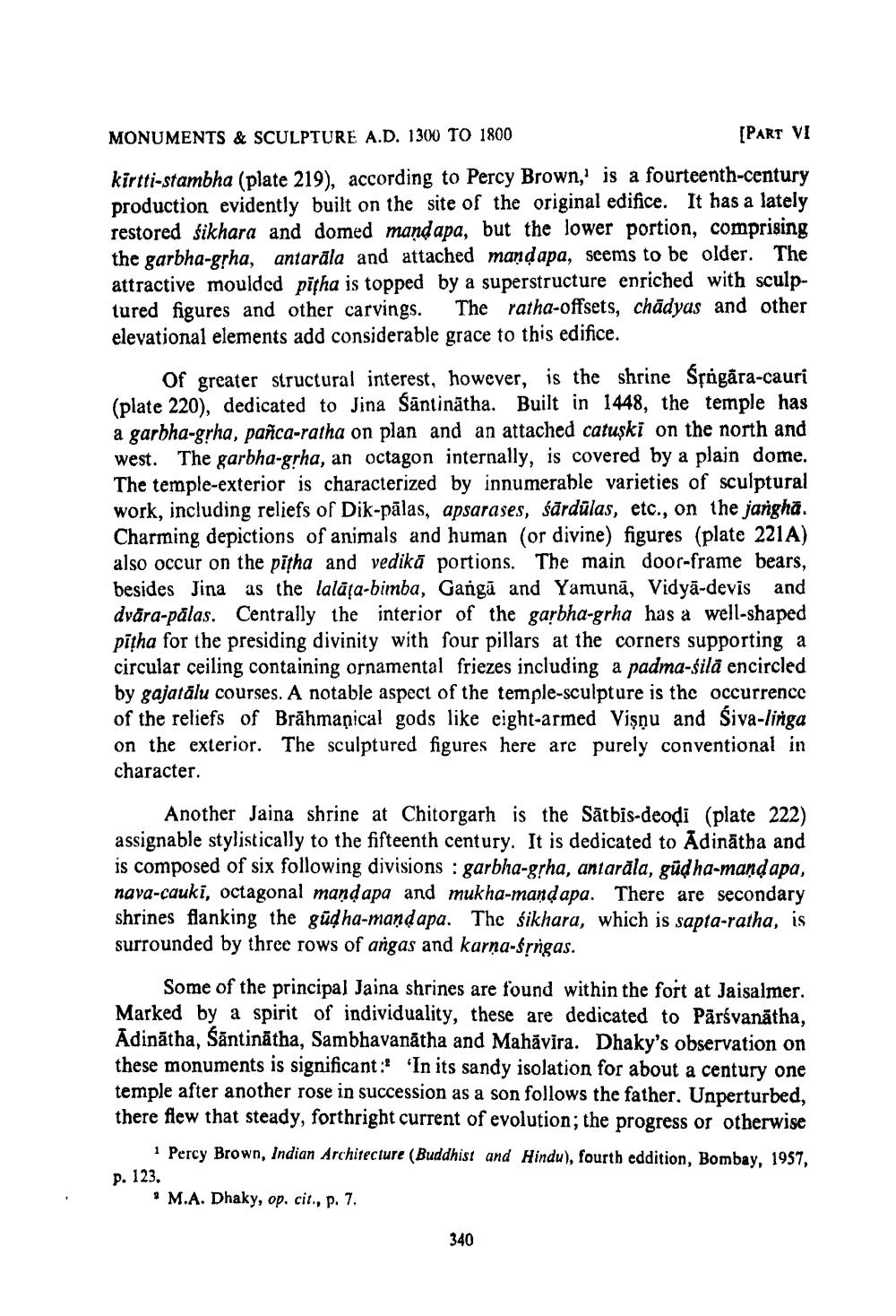________________
MONUMENTS & SCULPTURE A.D. 1300 TO 1800
[PART VI
kirtti-stambha (plate 219), according to Percy Brown,' is a fourteenth-century production evidently built on the site of the original edifice. It has a lately restored sikhara and domed mandapa, but the lower portion, comprising the garbha-gṛha, antarala and attached mandapa, seems to be older. The attractive moulded pitha is topped by a superstructure enriched with sculptured figures and other carvings. The ratha-offsets, chadyas and other elevational elements add considerable grace to this edifice.
Of greater structural interest, however, is the shrine Śṛngara-cauri (plate 220), dedicated to Jina Santinätha. Built in 1448, the temple has a garbha-gṛha, pañca-ratha on plan and an attached catuski on the north and west. The garbha-gṛha, an octagon internally, is covered by a plain dome. The temple-exterior is characterized by innumerable varieties of sculptural work, including reliefs of Dik-pālas, apsarases, särdülas, etc., on the janghā. Charming depictions of animals and human (or divine) figures (plate 221A) also occur on the pitha and vedikā portions. The main door-frame bears, besides Jina as the lalata-bimba, Ganga and Yamuna, Vidya-devis and dvara-pālas. Centrally the interior of the garbha-grha has a well-shaped pitha for the presiding divinity with four pillars at the corners supporting a circular ceiling containing ornamental friezes including a padma-sila encircled by gajatālu courses. A notable aspect of the temple-sculpture is the occurrence of the reliefs of Brahmanical gods like eight-armed Visņu and Śiva-linga on the exterior. The sculptured figures here are purely conventional in character.
Another Jaina shrine at Chitorgarh is the Satbis-deoḍi (plate 222) assignable stylistically to the fifteenth century. It is dedicated to Adinatha and is composed of six following divisions: garbha-gṛha, antarāla, güḍha-mandapa, nava-cauki, octagonal mandapa and mukha-mandapa. There are secondary shrines flanking the gudha-manḍapa. The sikhara, which is sapta-ratha, is surrounded by three rows of angas and karna-śṛngas.
Some of the principal Jaina shrines are found within the fort at Jaisalmer. Marked by a spirit of individuality, these are dedicated to Pārsvanatha, Adinatha, Santinatha, Sambhavanatha and Mahavira. Dhaky's observation on these monuments is significant: 'In its sandy isolation for about a century one temple after another rose in succession as a son follows the father. Unperturbed, there flew that steady, forthright current of evolution; the progress or otherwise
1 Percy Brown, Indian Architecture (Buddhist and Hindu), fourth eddition, Bombay, 1957,
p. 123.
M.A. Dhaky, op. cit., p. 7.
340




